2013 Ibis Mojo SL-R XT
(discontinued)
| Where To Buy | |||
|---|---|---|---|
Free shipping on orders over $50 (continental U.S. only).
International shipping available. Some exclusions apply. |
|||
Free shipping on orders over $50 (continental U.S. only).
International shipping available. Some exclusions apply. |
|||
Reviewed by Matt Thompson, Steve Wentz, Jess Pedersen, & Brandon Turman // Photos by Shawn Spomer & Brandon Turman
Founded in 1981 in Scot Nicol's garage, Ibis Cycles has a long and rich history in mountain biking, even though they've had to overcome a few bumps along the way. Throughout the years they've developed a number of bikes that are seen as iconic - innovation in the sport and often a welcome breath of fresh air amidst lots of marketing hype. They're a company that builds what they want to ride, and in 2006, that was the Ibis Mojo Carbon - a bike that stood out as the first carbon fiber monocoque all-mountain rig. The Mojo Carbon would eventually evolve into the Mojo SL (Super Light) in 2007 and later lead to the big-hitting Mojo HD (Heavy Duty) in 2010. In 2011, they brought together the best of both the SL and HD in the new Mojo SL-R, adapting new standards and technology improvements at the same time.
Having seen Brian Lopes do incredible things on his long travel Mojo HD, we were curious to see how its shorter travel brother would fare, so we invited Ibis to send over the SL-R for our 2013 Test Sessions in Southern Utah.

Mojo SL-R Highlights
- Carbon fiber monocoque frame and swingarm
- 26-inch wheels
- 140mm (5.5-inches) of rear wheel travel
- dw-link suspension platform
- Tapered head tube
- 69-degree head angle
- 73-degree seat angle
- 336mm (13.2-inch) bottom bracket height
- 429mm (16.9-inch) chainstay length
- BB92/Press GXP type bottom bracket
- 142x12mm Maxle rear end
- Measured weight (size Large): 26-pounds 4-ounces (11.9kg)
- MSRP $5,878 for complete XT build with fork, headset, and seatpost upgrade // MSRP $2499 for frame and shock only
Of the 22 bikes we tested during the Vital MTB Test Sessions, the Mojo SL-R immediately stood out for its remarkably low weight. At 26.25-pounds, the Shimano XT spec'd SL-R was the lightest of the bunch, even with a dropper post. When compared to other bikes in the same price range it was nearly three pounds lighter, which is pretty huge. If you've got the cash, the more expensive XTR build weighs in at a scant 22.4-pounds and is a definite class leader.
So how'd they pull it off? For starters, they were building off an already light platform with the Mojo SL, but the Mojo SL-R is even lighter thanks to some improvements in their carbon fiber molding technology:
"We start by molding a sacrificial mandrel in exactly the shape that we want the inside of the frame to be. That becomes the 3D template for the bladder that holds all the carbon preform before it’s laid into the mold. This allows the lay-up to be done in one piece, with no joints anywhere. The result is a more precise lay-up that eliminates the need for additional foam or filler to mold the complex shapes. What that means for you is a lighter and stronger frame. When you compare the SL-R to the Mojo HD, it’s between 80-90% of the HD’s stiffness in every measurement, yet with a frame weight of under five pounds."
Additional front triangle updates over the SL include a tapered headtube, direct-mount front derailleur, BB92/Press GXP style integrated bottom bracket, compatibility with the Mojo HD downtube rock guard, and HD style cable routing with new molded carbon cable stops and provisions for a dropper post. You won't find ISCG tabs on the SL-R, but an upper guide is still an option using the front derailleur mount should you choose to go to a 1X chainring configuration. Bottle mounts are under the downtube, and while we're happy they're there, the bike's design doesn't allow for better placement.
Rear triangle updates include a 142mm Maxle through axle, carbon fiber post-mount brake mounts, and a metal chain suck plate with more coverage. Common to all of the Mojo designs, there's a non-drive side strut connecting the chain and seat stays, boosting rear end stiffness. The bike also has plenty of mud clearance should that be an important consideration in your neck of the woods.

When it came to the bike's suspension design, Ibis licensed the well-regarded dw-link. Known for its strong position sensitive anti-squat characteristics, the dw-link system counteracts weight transfer and drivetrain forces while pedaling, regardless of damper settings. The leverage ratio curve is identical to the Mojo SL, which starts progressive then switches to regressive at the last half of the stroke. This is said to improve initial sensitivity while providing some level of support in the mid-stroke.
The one-piece rear triangle is connected to the main frame with two compact links. The upper "Lopes Link" was co-developed with Brian Lopes to give the entire Mojo line better handling. Sealed bearings and titanium hardware can be found throughout, and are easy to access for maintenance if needed. The shock is also in a great place for on the fly adjustments while riding.
On The Trail
With 5.5-inches of travel to work with and a promise of being a good pedaler, we decided to take the bike on two trails near St. George, Utah. Matt piloted it around St. George, Utah's Zen Trail - think technical rock ledges, punchy climbs, high speed descents, and some good chatter mixed in with a few sizable hits and large g-outs. Jess took it on the faster, flowier, and more pedally Barrel Roll Trail. The two combined offered a good mix of terrain, both tech and pedally, to see what the SL-R was really made of. A follow up test was also due for the SL-R (more on that later), during which Steve rode the bike in a few spots along the Front Range of Colorado.
At 6-feet tall, both Matt and Jess were cramped on our size Large test frame. Ibis's sizing is quite short in relation to the rest of the industry. Save the seat tube height, the 'Large' designation as you know it is anything but. Steve, who usually rides Medium bikes, fit the SL-R perfectly. For him, the bike was quite comfy and lacked any surprising twitchy mannerisms, allowing him to feel at home quickly. Choose the wrong size and you may find the bike overly twitchy and cramped on sustained climbs, so know that you'll want to look at the numbers before deciding on a frame size.
Geometry is unchanged from the Mojo SL, but thanks to the updated tapered headtube, the SL-R is Cane Creek AngleSet compatible. We took full advantage of this, opting to push the front end out the maximum amount to 67.5-degrees. We would've loved an additional degree or so, but this number was good for most sections of the trail. Aside from the short top tube, the seat tube length was good, head tube length comfortable, chain stays short enough to be playful, and bottom bracket low enough to corner well.

Our perception of downhill and technical performance was also directly related to the sizing issue. For Matt and Jess, the bike did not inspire confidence when descending. The combination of a short front end, flexy stem, and a fork with inadequate damping left them wondering where the front wheel was headed next. It did feel playful and was easy to switch lines when the terrain wasn't steep due to the bike's low weight and stiffness, but it was quite sketchy when the grade increased and they needed to be on point.
For Steve, geometry wasn't as much of an issue, and he described it as feeling like a longer travel XC bike that instilled some level of confidence and encouraged him to open it up a bit. The same suspension issues were apparent to him as well, though, and while charging through the rough the FOX 32 CTD Talas fork would often dive badly. Meanwhile, the back stayed near the top of its travel, and when compounded with the resulting weight shift he still felt over the front end often, despite correctly sagged suspension and a frame that fit him. With a properly damped fork in place, the bike would have been more suited to steep terrain, so consider consulting FOX for a tuning solution if you're an aggressive rider.
On mellower terrain, the bike's positive characteristics showed through better. Just a few hundred feet into the trails, it was quickly obvious that the SL-R is a phenomenal pedaler, especially while seated. The rear end did well over bumpy terrain while pedaling, and popping the front end up and over square ledges and tech moves was easy to do while seated. Standing, pulling the front end up for last second maneuvers was average. The also bike tracked well in turns.
The SL-R not only was the lightest bike in our test, but it also felt light, which isn't always the case. It rolled like a dream with the stock tires, giving it a very nimble and snappy feel for a 5.5-inch trail bike. The weight was well distributed through the bike, and it still felt like there was something to move around, not breaching the point at which a bike can become too light.
Rear suspension performance was good over braking bumps, small to medium square edge bumps, and successive medium hits. One previous criticism of the Mojo SL was less than ideal small bump sensitivity, and we think the new Kashima coated FOX CTD Float shock has helped the SL-R in this area. The progressive-regressive design soaked up small bumps well, but the bike didn't want to go into its travel much until a certain point at which it'd give and then go through too much. This was evidenced when pumping hard through compressions and getting less response than we would have liked, and also by bottoming the rear end on medium to large hits. The addition of a volume spacer inside the rear shock could help in this area, making it slightly more progressive at the end of the stroke.

Out of the saddle sprints showed that the SL-R really likes to get up and go. When in the middle or large chainring, the bike had a stable and firm platform to mash against, and it accelerated quickly with very little pedal bob. The back end was also very stiff.
This bike felt really at home when pointed uphill (provided sizing was right), and proved to be a very efficient climber. The dw-link system really rewards a smooth pedaler, and combined with the 16.9-inch chainstays there was good, consistent traction at all times while climbing. Body position felt great, was centered, and moving around was easy. It also handled tight switchbacks well, never pushing in the turns.
Build Kit
When it comes to the build kit, Ibis offers a lot of options. The SL-R can be customized with six different kits and a myriad of component upgrades. Our test bike used the Shimano XT build with a FOX 32 Talas CTD fork, Cane Creek AngleSet, and KS LEV seatpost upgrades.

While we see it as a necessary to achieve a slacker front end, the Cane Creek AngleSet creaked loudly during abrupt impacts. This happened several times on the often bumpy trails we tested this bike on. Taking the front end apart, cleaning, and re-greasing it would have likely fixed the problem for a limited period of time.
Cockpit wise, the 711mm wide Easton Haven bars had us wishing for something a bit wider, but it was still manageable. Rough descents and hard sprints revealed that the house-branded Ibis stem was very flexy, and we'd recommend swapping it out if you're a heavy or aggressive rider.
We love the KS LEV adjustable seatpost, and it once again impressed us with its smooth action, easy to actuate lever, and flawless performance during the course of our rides.
Drivetrain action was spot on thanks to Shimano's XT line. Shifting was precise both front and rear, though we question the need for a triple ring up front as opposed to a more modern 2X setup. Note that the SL-R uses Shimano's new direct mount rear derailleur hanger, which limits your replacement options to the Shimano brand, but it does help with shifting consistency. Chain noise wasn't very noticeable unless we were in the small chainrings at the front or rear, and the clutched derailleur did a good job of keeping the chain on.
The Specialized Ground Control and Fast Trak tires rolled incredibly well on all types of terrain, but the combo was a little drifty on anything but hardpack or rock slabs. Moving the Ground Control to the back and mounting something with a little more meat up front would help the bike maintain its composure a little better in loose or wet conditions.
Shimano's XT brakes also worked very well, offering a comfortable feel, plenty of power, and great modulation without being grabby or fading during long descents.
Long Term Durability
While we'd love to say that all was okay, we experienced a first with the Ibis Mojo SL-R during our Test Sessions - a cracked frame and linkage. For the sake of transparency for you, the reader, this is our account of what happened...
During big impacts on our first ride, we noticed a disconcerting sound coming from the frame. We couldn't immediately place it, and initially attributed it to the Cane Creek AngleSet. Post-ride, we determined that the Lopes Link, which connects the seat stays to the seat tube, was coming into contact with the seat tube at or near bottom out. It was enough contact to chip the paint off the frame in just one ride. Unaware that this could result in issues that weren't just cosmetic, we continued to test the bike.

Two more rides in, the frame made a rather loud snapping sound when landing a three to four foot drop to flat. It was then that multiple cracks were fully visible, both in the carbon and the Lopes Link. The carbon had broken in four places - twice on the seat stays just behind the seat tube, and twice on the non-drive side strut that connects the stays.
Why did this occur? Through a series of discussions with Ibis, we determined that this may have resulted from a few possible causes:
1. - The shock might have somehow exceeded its travel, allowing the link to hit the frame. This could have been due to a mis-spec'd shock, something wrong internally, or bent hardware.
2. - There was a chance that the underside of the seat stay had cracked early on, creating an asymmetric load which resulted in the broken Lopes Link and additional cracks. Ibis was previously aware of a very rare seat stay cracking issue near the Lopes Link and has since beefed it up as a running change.
3. - Prior to sending us the bike, Ibis pre-tested it for us by riding the sample bike off a four foot loading dock to a flat landing with a 205-pound guy aboard it, twice.
At this point we performed a number of checks on the frame, trying to eliminate some variables. We first verified that the correct shock size was used. In our eyes, the shock never exhibited any funny behavior. Sag was set to 25-30%, depending on the rider, and all seemed normal. On the off chance that this may have been a fluke, that there was some damage before we received it, or that the lack of a recently updated seatstay was to blame, we offered to retest the bike. Ibis sent over a new bike and off Steve went…
Two rides later, the new frame showed some similar paint chipping just below the Lopes Link, indicating that the linkage was once again hitting the seat tube near bottom out. Again, we looked over the frame. This time there were no signs of cracks on the seat stays or the strut, the correct shock was spec'd, and the shock was in proper working order. All immediately visible signs were good, save the chipped paint. We stopped riding the bike then and sent it back to Ibis for further evaluation.
Having experienced one failure and seeing the initial signs of what might lead to another, we looked to other Mojo SL-R owners for similar signs of damage. In the end, four of five total bikes showed chipped paint below the Lopes link, and two of the five had cracks in the carbon, including our first test bike. The other bike that cracked has since been warrantied without question, and the new, beefier seatstay is in place.
What was the cause? In our opinion and based on what we'd seen up until that point, there isn't enough clearance between the seat tube and Lopes Link at bottom out, which leaves little room for any variation in the outside diameter of the seat tube. Because carbon is hand laid, the thickness of the carbon can vary slightly from frame to frame, and when the carbon is too thick it presents an issue at bottom out. If the Lopes Link hits the frame, it can direct a lot of force into places it wasn't designed to withstand, which may eventually result in a damaged frame.
Following Up
With our experiences behind us, we reached out to Ibis for a comment about the potential issue, and what they had found after looking at our test bikes:
"There's a saying, 'Don't bring a knife to a gun fight.'
We have not had a lot of problems in the field with the SL-R, there are thousands out there and a relatively small number of warranty issues, approximately 1%. We now know what happened on your bikes. The rear shock reducer hardware and Ti bolt on both bikes you sent back were bent. This changed the bottom out point of the suspension, which in turn caused the other issues you saw. Although we haven't seen failures like this, in the past we have seen bent hardware with aggressive riders and we were able to solve it by substituting a high strength steel shock shaft for the standard aluminum version. Your test bikes did not have the steel shaft. We have made a running change in our spec to the steel shaft, which will eliminate this issue.
Realistically, the Mojo HD would probably be a better choice for riders that generate these kinds of loads, but then it probably wouldn't have been the lightest bike in the test. In other words, we brought a knife to a gun fight." -- Scot Nicol, Ibis Cycles Founder and Co-Owner

What's The Bottom Line?
On one hand, the Ibis Mojo SL-R performs remarkably well while climbing and sprinting, is a fun ride while cruising all but the steep and hairy stuff, is incredibly light weight, has a stiff rear end, good looks, and a nearly all-inclusive list of features. On the other hand, sizing could be a big issue for those that aren't aware, steep downhill and technical performance leaves a good deal to be desired, some components aren't quite up to par, and we uncovered a potential design flaw that complicated things big time. All told, in perhaps our most complex review to date, we're ultimately unsure how to rate the Mojo SL-R and have decided to withhold a star rating at this time.
As spec'd, we think the SL-R would be a good fit for the cross-country rider looking to step up in the travel game. It's a decent little trail slayer under the right type of rider - one who pounds out the miles while in the saddle on relatively smooth terrain - and there are potentially big gains to be had thanks to the bike's low weight.
With the new, beefier hardware as a result of our test, it's entirely possible that the issue we experienced has been solved. Not knowing for certain without re-testing the bike again, we'd suggest that heavier hitting, dynamic riders consider the Mojo HD - a bike that has a pretty glowing reputation. We're very encouraged by Ibis's response and their willingness to take a look at their design, which speaks volumes about the company and their desire to make some really nice bikes.
For more information about the Ibis lineup, head over to www.ibiscycles.com.
Bonus Gallery: 29 photos of the 2013 Ibis Mojo SL-R
About The Reviewers
Matt Thompson - Humble enough not to claim his Master's Downhill World Champ status when we asked him what his accomplishments were, Matt has over 20 years on a bike and likes to go fast. Really fast. At 210 pounds of trail building muscle, he can put the hurt on a bike in little to no time.
Jess Pedersen - Jess is one of those guys that can hop on a bike after a snowy winter and instantly kill it. He's deceptively quick, smooth, and always has good style. He's also known to tinker with bikes 'til they're perfect, creating custom additions and fixes along the way. Maybe it's that engineering background...
Steve Wentz - A man of many talents, Steve got his start in downhilling at a young age. He has been riding for over 17 years, 10 of which have been in the Pro ranks. Asked to describe his riding style he said, "I like to smooth out the trail myself." Today he builds some of the best trails in the world (and eats lots of M&M's).
Brandon Turman - Brandon likes to pop off the little bonus lines on the sides of the trail, get aggressive when he's in tune with a bike and talk tech. In 13 years of riding he worked his way through the Collegiate downhill ranks to the Pro level. Nowadays he's Vital MTB's resident product guy.
Specifications
| Where To Buy | |||
|---|---|---|---|
Free shipping on orders over $50 (continental U.S. only).
International shipping available. Some exclusions apply. |
|||
Free shipping on orders over $50 (continental U.S. only).
International shipping available. Some exclusions apply. |
|||













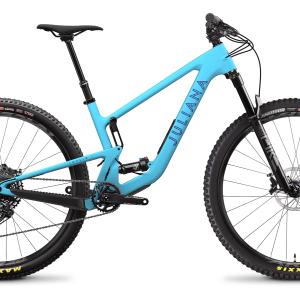
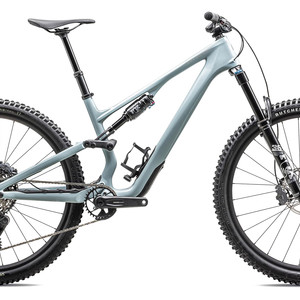

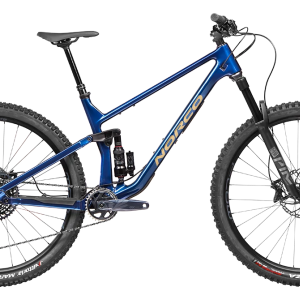

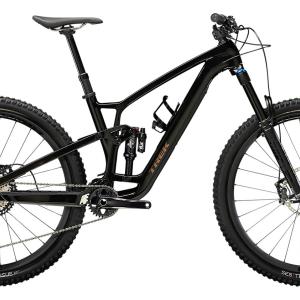
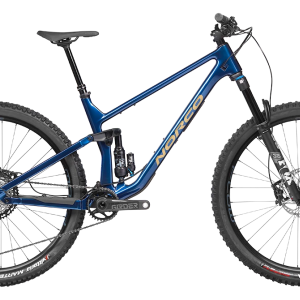






17 comments
Post a reply to: 2013 Test Sessions: Ibis Mojo SL-R